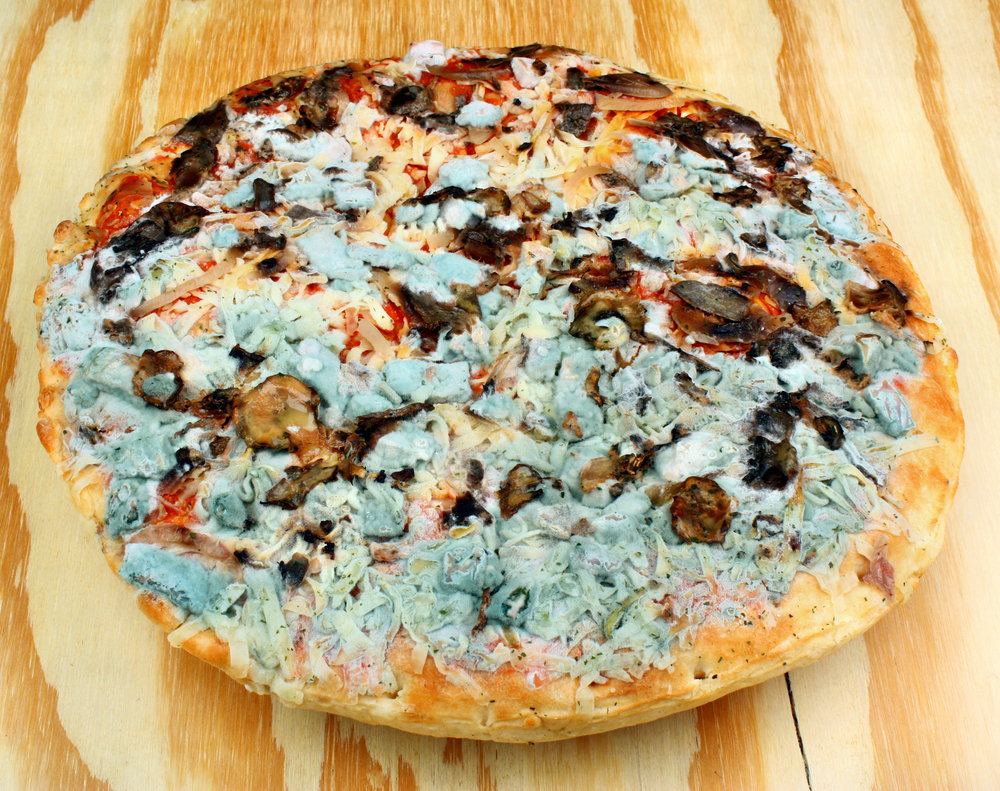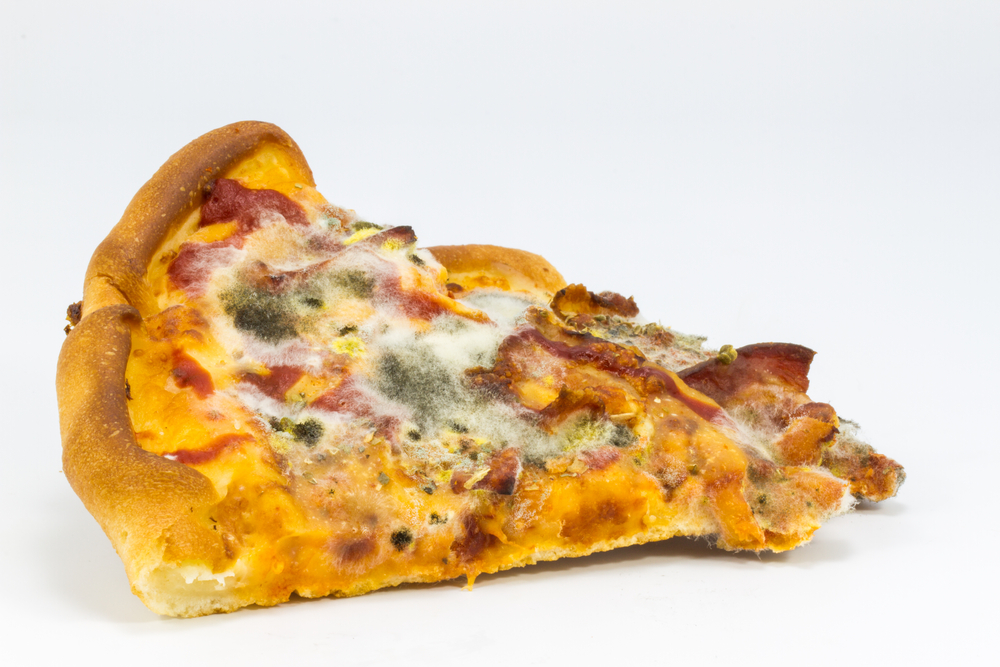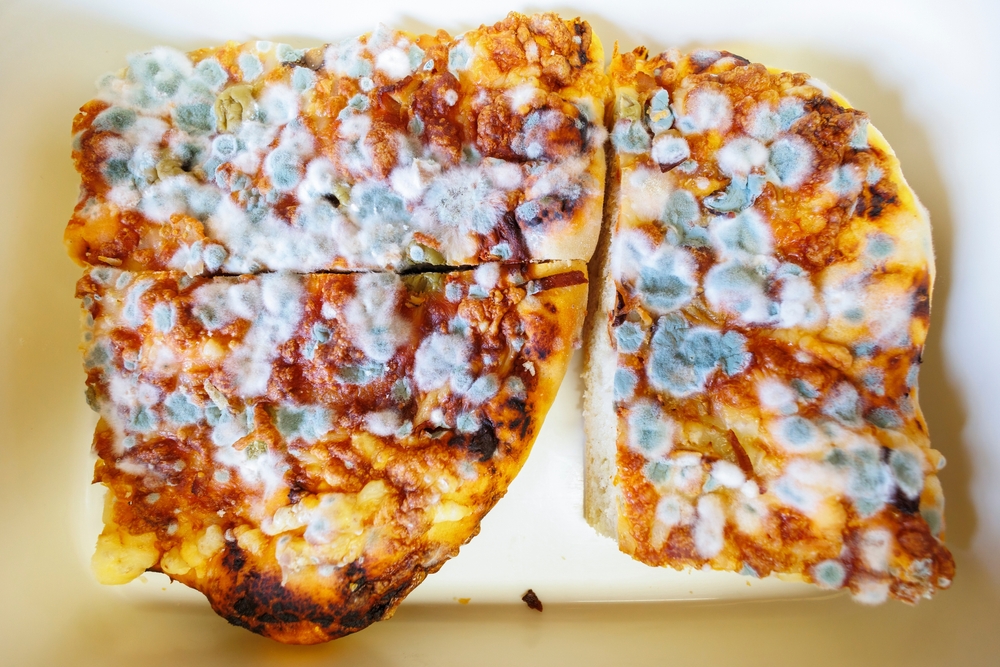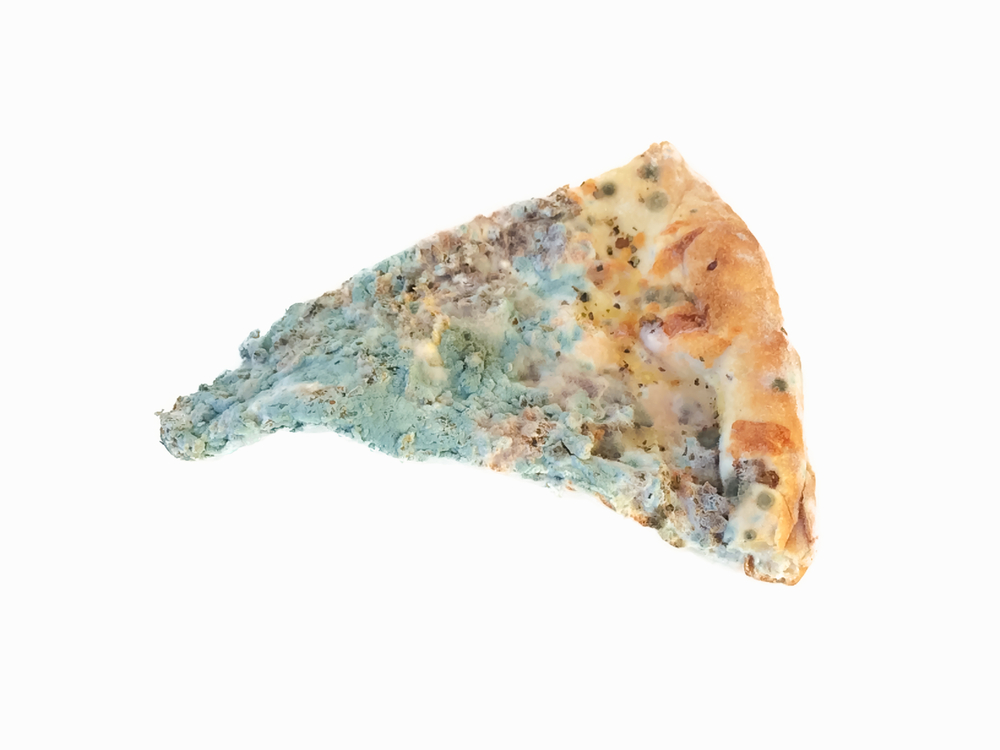Many of us have at some point dealt with the issue of moldy pizza. Even if it could be alluring to simply clip off the moldy portions and eat the remaining food, it’s crucial to understand the dangers. A form of fungus called mold can develop on food, and some molds can be dangerous to our health.

Pizza that is starting to mildew is best avoided at all costs and should be thrown out. The rest of the pizza may not be safe to consume even if the moldy portion is little. Because mold spores can disperse throughout the food, it might be challenging to identify the portions that are affected.
Additionally, certain mold species create toxins that might make humans sick or have allergic reactions. Simply put, eating stale pizza is not worth the risk.
Causes of Moldy Pizza
Moldy pizza is a common problem that can ruin the entire pizza and make it unsafe to eat. There are several causes of moldy pizza that we should be aware of to prevent it from happening.

In this section, we will discuss the three main causes of moldy pizza: moisture, temperature, and expiration date.
Moisture
Moisture is one of the main factors that contribute to the growth of mold on pizza. When pizza is exposed to moisture, it creates a perfect environment for mold to grow.
One of the ways that moisture can get into pizza is through the pizza sauce. If the sauce is too watery or if too much sauce is used, it can create a moist environment for mold to grow.
Another way that moisture can get into pizza is through the cheese. If the cheese is too moist or if it is not stored properly, it can create a moist environment for mold to grow. Blue cheese is particularly susceptible to mold growth because it already contains mold spores.
To prevent moisture from getting into pizza, it is important to store it in a dry place. If you are using plastic wrap to cover the pizza, make sure that it is tightly wrapped to prevent moisture from getting in.
Temperature
Temperature is another factor that contributes to the growth of mold on pizza. Mold thrives in warm and humid environments, so it is important to store pizza in a cool and dry place.
If pizza is stored in a warm place, such as on a kitchen counter, it can create a perfect environment for mold to grow.
Another factor to consider is the temperature of the freezer. If pizza is stored in the freezer for too long, it can become freezer burnt, which can create a moist environment for mold to grow.
To prevent mold from growing due to temperature, it is important to store pizza in a cool and dry place. If you are storing pizza in the freezer, make sure that it is properly wrapped to prevent freezer burn.
Expiration Date
The expiration date is another important factor to consider when it comes to moldy pizza. If pizza is past its expiration date, it is more likely to have mold growth.
This is because the expiration date is the point at which the pizza is no longer safe to eat.
To prevent mold growth due to the expiration date, it is important to check the expiration date before eating pizza. If the pizza is past its expiration date, it is best to throw it away to prevent the risk of foodborne illnesses, such as salmonella.
Moldy pizza can be a serious problem that can lead to foodborne illness. By understanding the causes of moldy pizza, we can take steps to prevent it from happening.
By storing pizza in a dry and cool place, checking the expiration date, and ensuring that it is properly wrapped, we can enjoy delicious and safe pizza every time.
Health Risks of Eating Moldy Pizza
Eating moldy pizza can be dangerous to our health. Mold spores are present everywhere, including in the air, on surfaces, and in food. While most mold spores are harmless, some can produce toxins that can make us sick. In this section, we will discuss the health risks of eating moldy pizza.

Food Poisoning
Moldy pizza can cause food poisoning, which is an illness caused by eating contaminated food. Symptoms of food poisoning include nausea, vomiting, stomach pain, and diarrhea. The toxins produced by mold can cause these symptoms. If we notice that our pizza has a moldy smell, we should not eat it.
Allergic Reactions
Some people may have an allergic reaction to the mold on pizza. Symptoms of an allergic reaction include itching, hives, and difficulty breathing. If we have a known allergy to mold, we should avoid eating moldy pizza.
Respiratory Problems
Inhaling mold spores can cause respiratory problems, especially for people with asthma or other respiratory conditions. Symptoms of respiratory problems caused by mold include coughing, wheezing, and shortness of breath. If we have a respiratory condition, we should avoid inhaling mold spores.
To avoid these health risks, we should always check our pizza for mold before eating it. If we notice any mold, we should throw the pizza away. We should also make sure to store our pizza properly to prevent mold growth. If we experience any symptoms after eating moldy pizza, we should seek medical attention immediately.
Preventing Moldy Pizza
As pizza lovers, we all know how frustrating it can be to open the fridge and find moldy pizza. Not only is it unappetizing, but it can also be a health hazard. Fortunately, there are a few simple steps we can take to prevent moldy pizza.

Storage
Proper storage is key to preventing moldy pizza. Here are a few tips to keep in mind:
- Store pizza in an airtight container or wrap it tightly in plastic wrap to prevent oxygen from getting in.
- Keep pizza in the fridge at a temperature below 40°F (4°C) to slow down the growth of mold.
- Avoid storing pizza in the fridge for more than 3-4 days.
Cleaning
Cleaning your kitchen and pizza-making surfaces regularly can also help prevent mold growth. Here’s what you can do:
- Clean your fridge regularly with a solution of 1 part bleach to 10 parts water to kill any mold spores that may be present.
- Wipe down your countertops and pizza pans with a solution of 1 part vinegar to 3 parts water to keep them clean and free of mold.
Handling
Finally, how you handle your pizza can also affect whether or not it becomes moldy. Here are a few tips to keep in mind:
- Always wash your hands before handling pizza to prevent the spread of bacteria and mold spores.
- Avoid leaving pizza out at room temperature for more than 2 hours, as this can create the perfect environment for mold to grow.
- If you notice any mold on your pizza, throw it away immediately. Don’t try to salvage any part of it.
By following these simple tips, we can prevent moldy pizza and enjoy our favorite food without any worries.
Conclusion
It is best to avoid eating moldy pizza or any moldy food. Mold is a type of fungus that can grow on food, and it can cause an allergic reaction or make you sick.
Some types of mold are used to make cheese, but the kind that grows on bread or fruit is not safe to eat.
If you see mold on your pizza, it’s best to throw it away. Even if the moldy part is small, the rest of the pizza could be unsafe to eat. Mold spores are usually harmless, but if they land on food, they can start to grow.
It’s important to properly store your pizza to prevent mold growth. Keep it in the fridge or freezer, and make sure it’s properly wrapped or sealed. If you’re not going to eat it right away, freeze it for later.
If you’re concerned about moldy pizza or any other moldy food, you can contact your local health department for advice. They can provide guidance on how to safely handle and dispose of moldy food.
Remember, we should always prioritize our health and safety when it comes to food. Moldy pizza might not seem like a big deal, but it can have serious consequences. So, let’s make sure we’re taking the necessary precautions to prevent mold growth and avoid eating moldy food.







Add comment